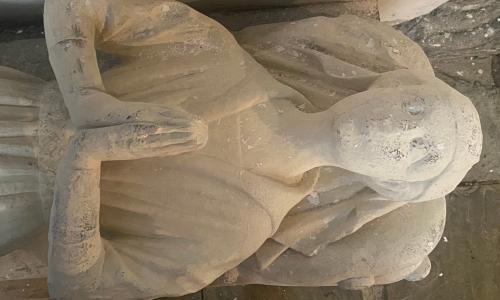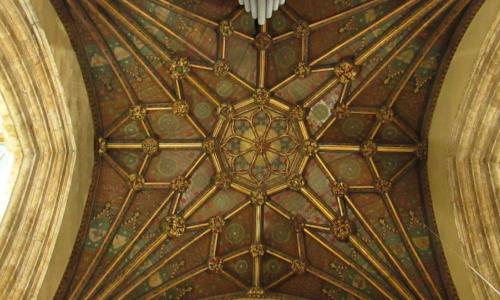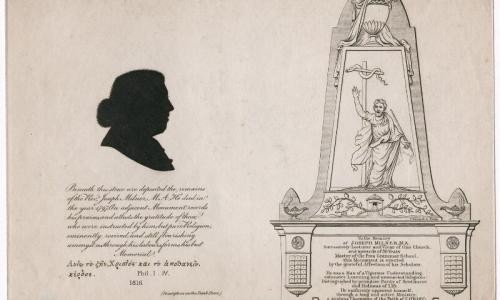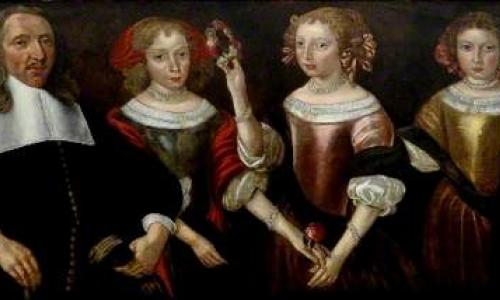Meet John Alderson - Hull's Medical Man
Medical, mechanical and literary - how did this man changes lives in Hull?
The Easter Story as Heraldry: The Crossing Vault Paintings
High in the Crossing Vault, 500-year-old paintings tell the Easter story through simple images.
What's for lunch?
This painting of the Holy Family having a meal had hidden meanings, but what are they?
Christian death and burial - some FAQs
Discover some interesting facts about how Christianity approaches death and burial!
The Graveyard of Holy Trinity - 700 years of burials
The Churchyard surrounding Holy Trinity was consecrated in the 1300s. From this date until the 1850s, it was used to bury the city’s dead.
The Berry Tankard - who owned it?
Our volunteers have tried to find out who might have owned the precious ceramic tankard in our archaeology collection. Could it be a master mariner or someone connected with Trinity House?
The Patron Saint of Ferrymen
A fragment of mediaeval glass tells the legend of St Julian and the Leper.
Grave-robbing in Hull - did it really happen? And why?
People sometimes think graves were robbed because people wanted to steal goods from them such as jewellery. However, the main reason for grave-robbing was to serve education and medical science.
Why did Hull have a new burial ground? And where did it go?
Castle Street Burial Ground opened in 1785 and had with plenty of space for the growing population of Hull.
Meet Jane Griswood
Jane Griswood's name once shone in brass studs on the lid of her coffin. But who was this old lady, buried in Castle Street in 1834?
Why the lamb?
Our tiny lamb found in child's burial has powerful religious significance. Reverend Dominic explains why.
Meet William Westerdale
This great man helped shape the shipping trade in Hull - but you've never heard of him.
Hull Minster's Library
Come and read about Hull Minster's 350-year-old library and the fascinating books within!
A Pinch of Salt: Salt Plates in Georgian and Victorian Graves
A lot of pottery has been found in Georgian and Victorian burials in the Minster churchyard and in Holy Trinity Burial Ground in Castle Street: plates, dishes and cups found in coffins. Why are they there?
Hull Holy Trinity in sources, Part II: the long 18th century (1700-1837)
In the second part of our series we investigate how Hull Minster was understood and interpreted in the 'Long' 18th century, from 1700-1837.
Hull Holy Trinity in sources, Part I: the 16th and 17th centuries
Hull's central church is the keystone of the city's heritage. Come and read actual accounts of the church from the 16th and 17th centuries!
The Parmentier Painting - how it lost its apostles
How did this huge painting travel around the county and why?
Capital Virgins - St Barbara and St Catherine
Who are the mysterious ladies at the top of the nave columns?
Medieval 'labelstops' at Hull Minster
Hull Minster is home to many intriguing 'labelstops' - small decorative carvings the offer a glimpse into medieval life.
Walter Crane, master of the Arts and Crafts Movement
Discover more about the artist Walter Crane, who designed two of Holy Trinity's most colourful stained glass windows.





















